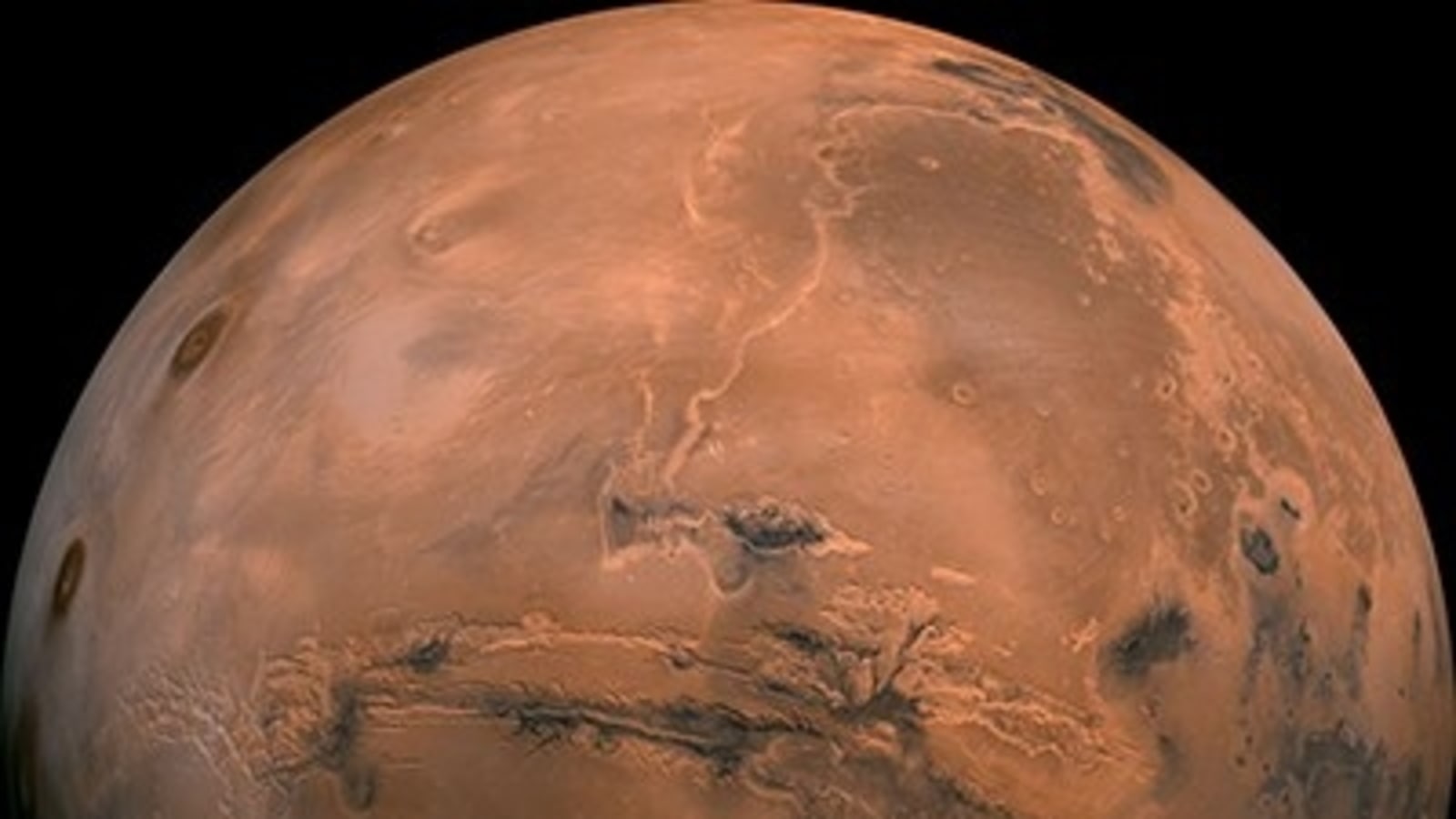NASA reveals new truths about water on Mars! Old LIFE theory trashed?
New NASA study about the presence of water on Mars raises questions about life on the red planet.
NASA studies had earlier revealed that water flowed on Mars about 3 billion years ago. But a recent study by the NASA Mars Reconnaissance Orbiter found signs of liquid water on the Red Planet far closer to the previously revealed period. Scientists say that surface water existed on Mars as recently as 2-to-2.5 billion years ago. That shaves off a billion years from earlier estimates – a massive amount of time. NASA explains that water evaporated as the planet’s atmosphere thinned over time, leaving behind the frozen desert world that the NASA Mars Reconnaissance Orbiter (MRO) is studying now.
The findings are obtained by Ellen Leask and Bethany Ehlmann while using data from the MRO instrument called the Compact Reconnaissance Imaging Spectrometer for Mars, through which they mapped the salts across the clay-rich highlands of Mars’ southern hemisphere while marking the areas impacted by the craters – key to date the salts. NASA explained, “the fewer craters a terrain has, the younger it is.” Scientists can estimate the age of an area of the surface by counting the number of craters on it.
The key question that the study raises is about life on Mars. If microbial life ever existed on Mars, how long might it have survived? Wherever there is water, there is life, at least on Earth. But for Mars, is it the same? The answers are still shrouded in mystery.
About the NASA Mars Reconnaissance Orbiter
The NASA Mars Reconnaissance Orbiter (MRO) has two cameras that are ideal for this task. With its black-and-white wide-angle lens, the Context Camera aids scientists in mapping the area of chlorides. The High-Resolution Imaging Science Experiment colour camera, which allows scientists to see features as small as a Mars rover from space, is used to zoom in. It was launched on 12 August 2005, has been mapping and photographing Mars since 2006. It also serves as a communication relay for rovers.
How did NASA scientists study the Mars surface?
It was due to these cameras only. Leask and Ehlmann found many of the salts in depressions via using both cameras to create digital elevation maps. They were able to date the deposits using crater counting and indications of salts on top of the volcanic landscape. They were able to date the deposits by counting craters and looking for salts on top of volcanic soil.
For all the latest Technology News Click Here

